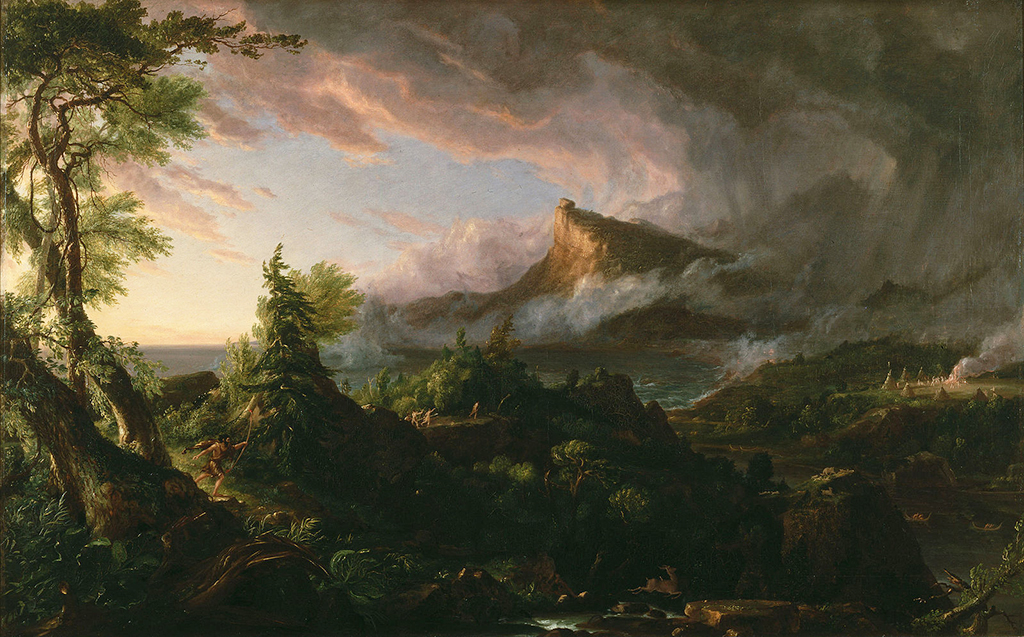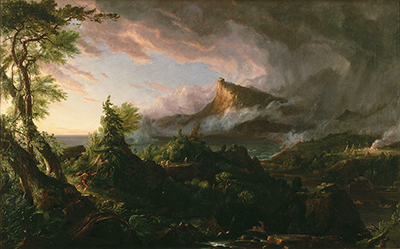The Course of Empire, a series of 5 paintings, was executed by Thomas Cole between 1833 and 1836. It's notable in part for displaying popular American views of the time, when lots of people considered pastoralism as the actual phase of human civilization and feared that empire would result in gluttony and imminent decay.
Cole frequently returned to the theme of cycles like in his series called The Voyage of Life. The Course of Empire contains the following works: Desolation, Destruction, The Consummation of Empire, The Arcadian or Pastoral State and The Savage State. All these paintings are 39.5" by 63.5" apart from The Consummation of Empire (51 inches by 76 inches).
Details of The Savage State
The Savage State was the first painting that Thomas Cole created. It's showing the valley from shore that's opposite the steep rugged cliff, in the dark light of the dawning stormy day. Mist and clouds shroud most of the distant landscape, which hints at the uncertain future. Canoes are paddling up the river, and there is a clearing with a group of tipis around the fire on the far shore. This is the nucleus of the coming city. A hunter clothed in skins is hastening through the wilderness, trying to pursue a fleeing deer. The visual references are of the life of aboriginal North American. The painting depicts the actual state of the real world. It's a healthy world that's unchanged by humanity.
Interpretation and Inspiration
The Course of Empire depicts the rise and fall of the imaginary city, located at the lower end of the river valley, close to its meeting with the sea bay. The valley is distinctly distinguishable in all the paintings in the series, in part due to unusual landmark, which is a large boulder situated atop the crag that overlooks the valley. Desolation, the last painting, shows the outcome, decades later. The city's remains can be viewed in the lead-coloured light of a day that's dying. The landscape has started to go back to the wilderness, and there are no humans. The remnants of human's architecture rise from underneath a mantle of ivy, trees and other plant overgrowth.
The sunrise seen on The Savage State is mirrored on the Desolation by a moonrise and the standing pillar indicates the last sunset rays. Critics say that this is intended to contrast earth's immutability with the transience of human. Byron's Childe Harold's Pilgrimage is a direct source of inspiration for these series of paintings. Cole designed the paintings to be exhibited in the picture gallery situated on the 3rd floor of his patron's mansion, located at 13 Greenwich Street, NYC. In 1858, the New-York Historical Society acquired the Course of Empire - The Savage State by Thomas Cole and the other series of paintings as a gift.





